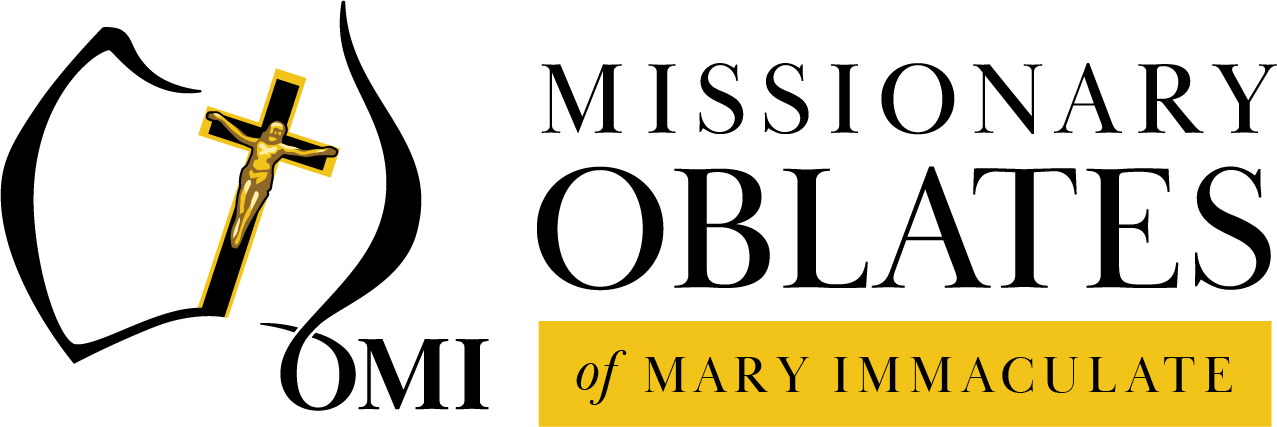125th Anniversary Reflection - Part 5
Reflection
The Oblates of Mary Immaculate are celebrating 125 years of serving the Church in Australia. It is an opportunity to give thanks for the past, to acknowledge the many blessings in our Province today and to prepare for another 125 years of service in Australia. The De Mazenod Family Gathering is an opportunity to build and strengthen connections between the Oblate ministries and explore structures for a Lay Association. Please keep the De Mazenod Family Gathering (14-18th August) in your prayers and continue praying for Vocations to the Priesthood and Religious life.
The following reflection is part of this journey, a series of reflections on our history written by Fr Austin Cooper OMI.
Oblates in Australia:
While Fremantle Oblates faithfully provided the round of services expected, changes were taking place. The church continued to grow as a popular venue for marriages from far beyond the parish; it also developed further as a centre for reconciliation.
Since 1894 Oblates have served as chaplains to the Prison. In 1991, when the jail was relocated to the new maximum-security Casuarina Prison, Fr. David Shelton continued as chaplain to this and other prisons.
Fremantle Hospital, is another facility serving a wide-ranging area, with Oblates such as Fr Tony Colbert faithfully providing a round-the-clock availability of pastoral care over many years.
Oblates also have a presence in Catholic Education with schools in Vitoria, Brisbane and Western Australia.
In 1989 a quite new venture came to Fremantle further enhancing its development as a centre: Notre Dame University was established in several handsome historic buildings throughout the city. The Oblates at St. Patrick’s were supportive from the first: Fr. John Archbold served as chaplain for some years, a role the Oblates maintained until recently. Since 1994 the Oblates have offered an annual scholarship and close relations continue between the University and St. Patrick’s. Another example of the Church reaching out to the community.
To this end, quietly, in 1971, Brother Ignatius Hannick OMI, assisted by stalwarts like Leo Cooper, began providing emergency sustenance to needy people doing it hard on the streets of Fremantle. Over time, this service spread from the cold, windy presbytery veranda, to secure parish premises, providing services during regular hours and serving meals 365 days of the year.
A governance structure was established and ‘St Patrick’s Community Support Centre’ was created. This has now grown to become the major Oblate Missionary Outreach in Western Australia. The Centre is well recognised for its excellence, with multiple accreditations from Government and welfare sectors.
Housing 125 -150 homeless persons and providing some 25,000 substantial meals each year, the Centre also offers services across physical, mental health, financial counselling and general rehabilitation programs
Constitutionally, the Oblate Parish Priest of Fremantle is the President of the Board of Governance. This ensures the ethos of the Centre remains true to the Oblate and Catholic traditions.
In a similar vein, on the other side of the continent, the intrinsic Oblate Missionary focus was creating other Social Outreach programs to assist the disadvantaged.
In Victoria, in the seaside town of Rosebud, Fr Tom Shortall OMI saw that some holidaying youth had been abandoned by the community. He responded to this need by setting up a coffee shop and drop-in centre in the Parish. Called “Rosie’s”, it ran from 1975 -1984. Other Rosie’s popped up throughout Victoria and in 1987, another Oblate priest, Fr Paul Costelloe OMI, took a van around the Gold Coast during ‘Schoolies” week providing support and friendship to school leavers.
Rosie’s outreach centres can now be found in many areas of Victoria and Queensland as they reach out to those most in need; the lonely, abandoned and marginalised. Just as in 1826 when Eugene De Mazenod first reached out the poor in his local French communities.
Meanwhile at St. Patrick’s Fr John Hannah (PP 1987-1996) petitioned for the Church to be raised to the status of a Minor Basilica. He also had an icon woven in Ireland as a reredos for the Basilica.
This was also the time during which St. Patrick’s developed a fine tradition of church music with a trained choir. Thanks to a generous gift by the Hughes family, in memory of Alice Hughes, between 1988–90 extensive works on the church organ were undertaken. Built by the Bellsham company, it incorporated some elements of the 1895 organ of Bishop Co. of London. Additionally, detailed rebuilding and enlargement was undertaken by the South Island Organ Co. New Zealand. Completed in 1998, it is the largest parish church organ in Australasia. It makes the Basilica a fitting venue for concerts provided by the resident organist Dominic Perissinotto and visiting artists.
All these developments revive the vision of Fr. Thomas Ryan: “The Catholic faith is a thing of beauty, our tradition of architecture, art, music and liturgy are all manifestations of this”.
This tradition is alive and well at St. Patrick’s and is being guided and developed by the present Rector and Parish Priest, Fr. John Sebastian. Hailing from the Province of India, he provides another instance of the continuing contribution of the wider Oblate world to the life and ministry of St. Patrick’s.
